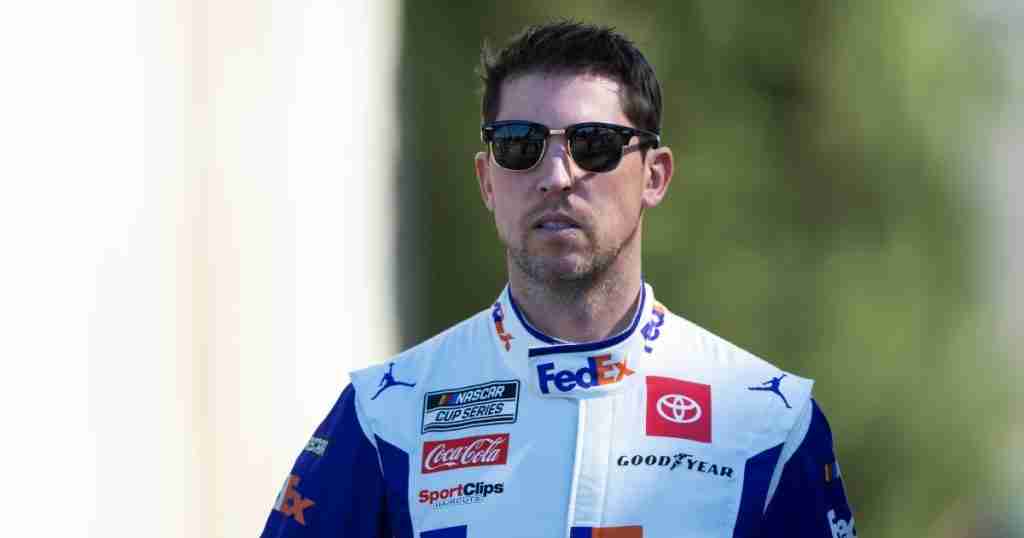NASCAR held a 30-minute meeting with drivers before Sunday’s Ally 400 at Nashville Superspeedway, and among the topics discussed – wet weather tires.
NASCAR brought Goodyear rain tires to New Hampshire last weekend and ordered all teams to use them for the remaining 82 laps after the two-hour, 15-minute delay due to rain. Denny Hamlin gave an overview of Bob Pockrass of FOX Sports of how NASCAR explained the wet-weather tire protocol, saying “there is always room for improvement.”
“The only thing I can say is they explained to us why they made these decisions and why they are trying to make it easier for themselves,” Hamlin said. “If you make a big mistake, which I think is a very valid mistake, you kind of find yourself set back and you’re less hesitant to take those risks again. So I was happy with everything they explained to me and definitely there’s always room for improvement, but they try to use all the facts they have to make the right decision. »
“I mentioned on the (Actions Detrimental) podcast that I thought they did a good job other than allowing cars to take fuel. That was the only thing that was maybe questionable. I like where they are with this and we will definitely continue to improve as teams with this. »
Denny Hamlin: New Hampshire was ‘treacherous’ with rain tires
Well before the race resumed, it appeared that NASCAR had a window of opportunity to run a few laps with rain falling lightly on the track. Instead, NASCAR brought the field back to pit lane and red-flagged the race in anticipation of more severe weather conditions.
When racing resumed, it was “treacherous,” Hamlin said on his podcast this week.
“Because we still don’t want to race in the rain,” Hamlin said. “Although they’re called wet weather tires, they’re wetter tires, which isn’t as sexy of a name. Rainy weather – I tell you, it would be too dangerous to hike this trail. Before we started the race, I mean, two cars did a precautionary spin before they even started. I just think when we went there it was probably the right time. But it was dangerous, I tell you, for 5-6 laps before the car got enough heat on the track to start creating dry patches.

